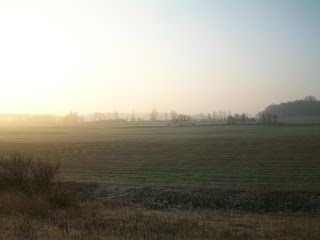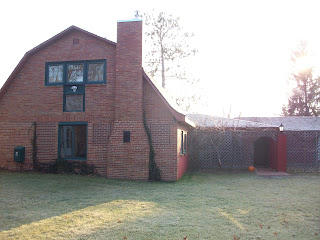"Our Time of Troubles... commenced with the catastrophic events of the year of 1914... Our civilization has just begun to recover." - Arnold Toynbee
Friday, December 21, 2012
Victorian Christmas at the Bradley Home
Thanks to the decorative efforts of many volunteers and the brilliant leadership of the Midland County Historical Society and Midland Center for the Arts, many Midlanders experienced a Victorian Christmas at the Bradley Home's Alight a Night. In addition to the usual Christian festivities of Christmas, Nativity scene, etc., the Bradley Home Christmas display signifies a middle class stability in Midland which gave our town its historic and contemporary bourgeois character. My readers may remember Titanic expert Floyd Andrick, who volunteered as our polite butler. I welcomed guests into the Receiving Parlor, while an associate Jake Huss opened up the Formal Parlor (Drawing Room) with Midland Symphony Orchestra cellist Linda Murray playing Christmas music on her original cello from the 1720s. Carolers, blacksmiths, and other ladies and gentlemen brought the house to life. Here is the Midland Daily News article, and below is a generalized rendering of my informal oral introduction to the house and family:
"Come into the Parlor, and welcome to another Bradley Home Christmas! It is now one hundred and thirty eight years since the construction of this house in 1874, and since then there have been many wonderful Christmases here. By 1916, Midland was known as the "city of homes," and this home was the best one of all because it was tied to the very essence of Midland itself. On this wall, we have featured John and Amanda Larkin. John founded the city of Midland when he set up a logging mill here for the logging industry. Midland is potentially important to loggers because three rivers intersect here (the Chippewa, Tittabawassee, and Pine), and rivers are the highways for loggers. They float their logs down these rivers and at intersections they will pull them up and have them cut. So John is here ready for them when that happens.
Their daughter, May Larkin meets an adventurous young man by the name of Benjamin Bradley. Now Benjamin moves up to Midland in 1866, after searving in the Civil War [dear readers, please forgive my nomenclature. In Midland, it is "safe" to call it the Civil War, though I should certainly have called it the War Between the States in a general setting] and going on a gold rush in Colorado. So he's a very adventurous and risky man, but he falls in love with May Larkin. They get married in 1869, and in 1870, they have their one and only daughter B. May (B. stands for "Baby," sort of like a "Jr."). By 1874, because Benjamin has married into a very notible Midland family, he begins construction on this home to show a sense of stability and wealth for the community. His own fortunes fluxuate a lot (he's very risky and invests in the Mexican Silver Expedition, not a good idea), but he always has to display an aura, or expession, or feeling of stability.
You can just imagine what Christmas would have looked like. It would have been a time to show off the home. So what we have here is all the Christmases that the Bradley family might have celebrated combined into one. Christmas decorating would have started in July, with drying out some of the greenery to be set up later. The family gathered in the room around, what one American author Washington Irving called, "the paternal hearth, that rallying-place of the affections, there to grow young and loving again among the endearing mementoes of childhood." The Christmas Tree would have been lit only on Christmas Eve with real candles, and maybe a bucket of sand nearby just in case of a fire. Before rapping paper became popular, they hid surprises in the tree. Maybe a trumpet... or Grandpa John gets a new walking stick [pull gifts from tree]. B. May was very fortunate for her era, and would have revived gifts like a rocking horse and a doll [show expensive gifts]. And then there was the games. Here is the most fantastic game of all, Spider Web [made from a web of ribbons suspended on the chandelier and ceiling]. You find your tag, follow your ribbon with your eyes all the way around the room... it changes colors and altitude... until you find a gift tied at the end... This game is the bean game. You dig in [a bowl with a silver spoon] and you have one chance to get something [candy]...
[If visitors stay longer] The restoration of this home began in 1969. The priests [of Saint Bridget's Catholic Church] used it as a rectory from the 1910s to 1969. It was falling apart and the church wanted rid of it. A Delta political science professor saw it and thought what a great opportunity to restore some local Midland history. The Midland County Historical Society acquired it, and we moved it out here in December 1969 (we had to cut several power cables to get it here). Then in 1970, the real work of restoration began..."
Merry Christmas
Wednesday, December 12, 2012
Hillsdale: Tower of the Guard against the Dark Towers of Deconstructionism
Hillsdale College remains one of the last great bulwarks of Western Christian learning to stem the tide of Deconstructionism. Giving undergraduates a respect for Western heritage, Hillsdale has helped raise a generation of leaders actively building Christian civilization, some of whom, I have had the honor to work alongside. Although I have many friends from Hillsdale, I never visited the campus until the week before last. I attended their two-hour performance of Handel's Messiah, fellowshiped with freinds, and inspected the library and campus as a whole. Magnificent! I did not take as many pictures as a should have, but I have substituted some pictures I found on the Internet to fill in the gaps...
Here's more like what it looked to me, having visited in winter, no snow though.
http://lifelightimage.wordpress.com/2011/10/06/eric-cortney/
My favorite statue on campus: Winston Churchill in the Student Union Building, slightly stooped as if the "survival of Christian Civilization" rests on his shoulders:
Here's the neo-Classical Central Hall:
http://www.robertpence.com/mi_hillsdale/mi_hillsdale.html
http://tyforquer.tumblr.com/
http://collegeprofiles.com/hillsdale.html
Here's more like what it looked to me, having visited in winter, no snow though.
There's a half-true joke on campus that Hillsdale boasts more statues to its student body ratio than any other college. One of them is a statue of a Civil War soldier (Hillsdale sent more soldiers to the war than any other college in America except West Point. Below the pedestal, Abraham bows in humbled respect for their service. Wonderful symbolism.
http://www.robertpence.com/mi_hillsdale/mi_hillsdale.html
http://en.wikipedia.org/wiki/File:Hillsdale_Lincoln.JPG
George Washington standing with honor:
http://en.wikipedia.org/wiki/File:Hillsdale_Washington.JPG
Thomas Jefferson contemplating liberty or knowledge
http://www.hillsdalesites.org/Galleries/campusphotogallery/thomasjeffersonbyprofessoranthonyfrudakis.html
Ronald Reagan with eternal optimism:
http://www.hillsdale.edu/admissions/news/news_story.asp?iNewsID=2925&strBack=/Default.asp
Margarate Thatcher, seated authoritatively
http://chicagoartmagazine.com/2010/01/can-conservatives-make-art/
Here is the beautiful campus church that we saw the Messiah in:
http://www.waymarking.com/waymarks/WM1M4E
http://www.waymarking.com/gallery/image.aspx?f=1&guid=02c43d93-807e-4875-97f0-d0b33e7c991ahttp://lifelightimage.wordpress.com/2011/10/06/eric-cortney/
My favorite statue on campus: Winston Churchill in the Student Union Building, slightly stooped as if the "survival of Christian Civilization" rests on his shoulders:
The Heritage Room in the library, my favorite room on campus:
Saturday, November 17, 2012
A Visit to Piety Hill: The Last Homely House
In the twentieth century, Russell Kirk laid the intellectual foundations of an contemporary academic defense of traditional conservatism, before passing into glory in 1994 (watch the excellent clip above from Kirk on the Hebraic and Christian foundations of Western civilization and the purpose of the academy). His generational home, Piety Hill remains a haven for those who are being buffeted by Post-modernism in the academy. It is the Imladris of learning and the Last Homely House with professorial manners to many of us Christian conservatives in the academies of America. Needless to say, I visit often, but yesterday I came for Thesis research. Mrs. Kirk invited me to a wonderful lunch and enlightening discussion with the Wilbur Fellows. Quietness seems to pervade the place, a peaceful timelessness. Here are some pictures of my visit, with some accompanying captions. Happy Thanksgiving!
Redeemed in Jesus,
Wesley
The rolling "Bundee Hills," as Professor Kirk referred to them (sorry, the real rises are hidden in the sun's glare and morning mist).
On the roadside, an old rickety Victorian farmhouse, in stark contrast to...
Piety Hill, entrance, Victorian Romanesque Revival
The Library, Victorian farmhouse style
Library trellis entrance
Library courtyard
Library front door (with lamp in the reflection)
Just inside the library
To the left
The Professor's friend and distinguished poet, T. S. Eliot
The Professor's manual typewriter.
The old family clock
The library hearth
Hearth stone murals (the professor was a Roman Catholic)
The library lecture hall, with Royal Stuart tartan carpet pattern
Bust of the Professor among his books The Sword of Imagination and The Conservative Mind
Long-shot of the library lecture hall
Back at the home for lunch after a morning's read
For those of you who doubted my involvement in all of this
The dinning room
Originals of some of Sir Walter Scott's letters
Architecture in the dinning room
Scottish Romantic wall-hangings
Back at the library, my work setup
Some good books (see my previous post for summary)
The library hearth with the gas fireplace "on" (it used to burn wood, in the Professor's days)
The Professor's workplace
The Professor reviving the Presidential Citizens Medal from Ronald Reagan in 1989
Notice the book on John Knox to the left
An inquisitive gnome on the shelf, like me.
A bust of Robert E. Lee, I think?
A bust of Abraham Lincoln
Subscribe to:
Posts (Atom)






















































































